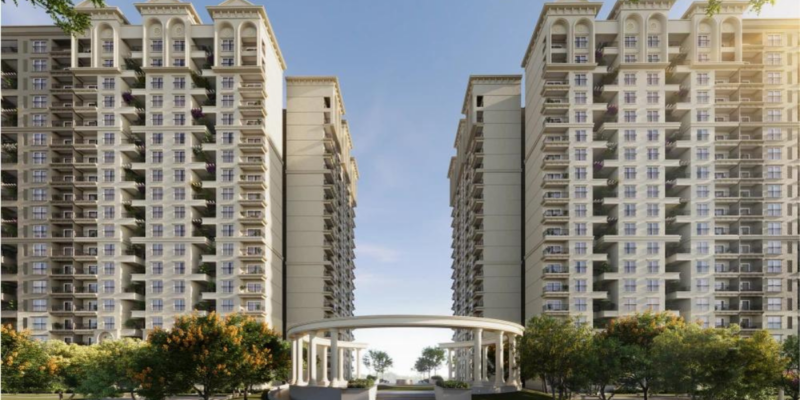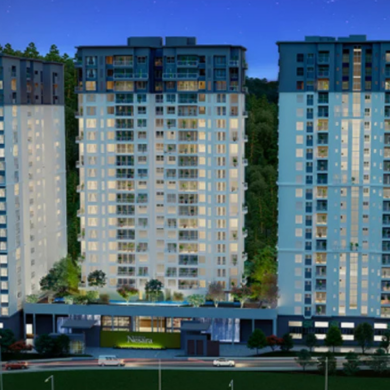
When searching for a new home, selecting the right neighbourhood is paramount to ensuring overall happiness and quality of life. A secure neighbourhood allows individuals to lead their lives without constant concern for crime or personal safety, providing them peace of mind. Moreover, living near schools, medical facilities, and workplaces enhances convenience.
When considering a new home or residence, it is crucial to acknowledge the significance of choosing the right neighbourhood. The neighbourhood choice can profoundly impact one’s quality of life, happiness, and overall satisfaction with their living situation. Professionals understand that selecting a suitable community involves various factors, including safety, accessibility to amenities, proximity to work or educational institutions, and the overall socio-economic environment.
Living in a safe neighbourhood provides residents peace of mind and a sense of security, allowing them to focus on their professional endeavours without unnecessary concerns about crime or personal safety. Moreover, being near essential amenities such as grocery stores, healthcare facilities, transportation hubs, and recreational activities makes daily life more convenient and time-efficient. These conveniences contribute to a higher quality of life and enable professionals to make the most of their valuable time.
Furthermore, homebuyers recognise the long-term benefits of residing in a neighbourhood with excellent schools or universities. Such educational institutions can provide future opportunities for their children’s education and career advancement. By choosing an area with reputable educational facilities, professionals can ensure their children receive a high-quality education, setting them up for success in their future endeavours.
Table of Contents
8 Ways to Find The Right Neighbourhood for Your Dream Home
-
Define Your Lifestyle Needs
When selecting a neighbourhood, thoroughly understanding your lifestyle, priorities, and preferences is paramount. Your primary focus should be considering your daily routine and the amenities you frequently require. For instance, if you are a fitness enthusiast, having gyms or parks nearby may rank high on your list. Similarly, suppose you have children or plan to start a family soon. In that case, access to reputable schools and safe parks becomes essential. Professionals, for instance, might prioritise living closer to their workplace or seek easily accessible public transportation options to ensure convenience during commutes.
Lastly, assessing the overall cost of living in each neighbourhood is essential. This can be achieved by researching rental or real estate prices and any additional expenses associated with specific areas. In conclusion, understanding your lifestyle, priorities, and preferences is crucial when selecting a neighbourhood. satisfaction.
-
Safety and Security of the Neighbourhood
When selecting a neighbourhood to purchase a house, it is crucial to meticulously consider the safety aspects to ensure the well-being of oneself and one’s family. To begin with, conducting thorough research on crime rates in the area is essential, relying on statistics provided by local law enforcement agencies. It is crucial to analyse the trends of various types of crimes, such as theft or assault, to assess the overall safety level.
Moreover, it is advisable to take into account factors that contribute to a secure environment, including adequate street lighting, proximity to hospitals and police stations, and the presence of surveillance systems. It is also prudent to check for potential hazards, such as flood-prone areas or proximity to industrial facilities.Furthermore, exploring online resources and forums where residents share their experiences living in different areas can provide valuable insights into the safety levels of specific neighbourhoods. These platforms offer a wealth of information that can help you make an informed decision that prioritises security and peace of mind for oneself and loved ones.
-
Amenities and Infrastructure in that Neighbourhood
When contemplating the purchase of a house in a particular neighbourhood, it is of utmost importance to thoroughly assess the available amenities and infrastructure. Amenities such as parks, recreational facilities, shopping centres, and healthcare services are vital factors that significantly contribute to a neighbourhood’s overall quality of life. Equally important is access to high-quality educational institutions, particularly for families with children.
Furthermore, evaluating the infrastructure of a neighbourhood is essential in determining its desirability. Transportation options, road networks, and proximity to major highways or public transportation hubs can profoundly impact convenience and property value in the long run. Additionally, one should consider the availability of essential services such as police stations and fire departments, as they play a pivotal role in ensuring safety and security within the community.
In conclusion, making well-informed decisions based on the amenities and infrastructure offered by a neighbourhood is crucial when purchasing a house that fulfils both immediate needs and long-term investment objectives.
-
Property Values and Appreciation
When considering which neighbourhood to purchase a house, one crucial factor is property values and appreciation. Understanding property values‘ trends and factors can significantly affect long-term investment returns.
Factors such as location, proximity to schools, amenities, transportation options, and crime rates all play a pivotal role in determining the desirability of a neighbourhood and its subsequent property value growth.
Conducting thorough market research, analysing historical trends, and seeking advice from local real estate experts can provide valuable insights into an area’s potential for future appreciation. It is essential to focus on the neighbourhood’s current state and its potential for growth and development in the years to come.
-
Neighbourhood Services and Utilities
The availability of services such as banks and supermarkets plays a crucial role in making an informed decision when purchasing a home. A neighbourhood that offers convenient access to these services not only enhances the quality of daily life but also contributes significantly to the overall desirability and value of the property.
Proximity to high-quality supermarkets ensures that residents have easy access to fresh and nutritious food options, particularly vital for families or individuals with specific dietary requirements. Similarly, having multiple banking options nearby provides convenience when managing finances, accessing loans, or seeking advice from financial professionals.
Furthermore, well-established grocery stores and banks are reliable indicators of a thriving community. They can be considered as solid indicators of a neighbourhood’s growth potential. These services reflect the level of development and stability within the area, making it an attractive choice for potential buyers. It is essential to consider these factors as they not only enhance the quality of life but also contribute to the overall value and attractiveness of the property.
-
Future Development Plans of the Neighbourhood
Municipal plans serve as a blueprint for the future of an area, encompassing various aspects such as land use, infrastructure, transportation networks, and environmental policies. These plans offer valuable insights into forthcoming developments or alterations that could impact the desirability and value of a property. Moreover, zoning regulations are crucial in determining how the land can be utilised within specific neighbourhoods. Familiarising oneself with these regulations is essential to ensure compatibility with personal preferences and intended usage of the property.
For instance, let’s consider a scenario where a prospective buyer envisions establishing a home-based business or wishes to avoid residing near certain establishments, such as noisy industrial zones or high-density commercial areas. In such cases, thoroughly understanding the zoning restrictions becomes indispensable. By consulting municipal plans and comprehending zoning regulations, potential buyers equip themselves with vital knowledge about the likely trajectory of the neighbourhood. This knowledge ensures that their investment aligns perfectly with their intended lifestyle and preferences.
-
Community Engagement and Involvement
When considering the purchase of a house in a specific neighbourhood, it is crucial to thoroughly research and evaluate the presence and effectiveness of neighbourhood associations and committees. These organisations are pivotal in ensuring their communities’ well-being, safety, and development. Neighborhood associations are typically responsible for addressing various issues, including zoning regulations, property maintenance, and organising community events. By actively participating in these associations or committees, residents can shape the future of their neighbourhoods and voice any concerns they may have.
Moreover, these groups often facilitate networking opportunities among neighbours, fostering a strong community spirit. Their involvement can significantly contribute to maintaining property values over time while providing avenues for an improved quality of life.
Therefore, potential homebuyers should carefully assess the effectiveness and level of engagement within the neighbourhood association or committee, as it reflects the collective effort made by the residents towards building a thriving community.
-
Online Research and Reviews of the Neighbourhood
Utilising online platforms to gather neighbourhood insights has become an indispensable tool in buying a house. These platforms offer a plethora of valuable information, enabling buyers to understand potential neighbourhoods comprehensively. With interactive features like maps and virtual tours, buyers can explore various areas without needing physical visits.Moreover, online platforms provide a wealth of data, including demographic information, crime statistics, school ratings, transportation options, and local amenities such as parks and shopping centres. This thorough research eliminates the reliance on real estate agents or word-of-mouth recommendations, empowering buyers to make informed decisions based on quantifiable data.
What sets these platforms apart is the inclusion of user-generated content and reviews from residents, offering invaluable insights into the livability of each neighbourhood. This firsthand information allows buyers to assess the suitability of a community based on the experiences of those who already reside there.
Final Decision-Making
While conducting an internet search can provide valuable insights about a neighbourhood, personally visiting it is the most effective way to determine its suitability. You can immerse yourself in the local ambience by strolling around the area. Additionally, do not hesitate to engage with the locals if you encounter them during your walk or while they are in their driveways. They possess invaluable knowledge about the neighbourhood’s character and the previous occupants of a property.
Gaining a comprehensive understanding is crucial for one to visit the neighbourhood at different times throughout the week. The atmosphere on a Sunday morning will differ significantly from a Wednesday afternoon or evening. It is essential to consider the type of community and neighbours you desire to live amongst presently. While some buyers may prefer a more secluded experience, others may seek to establish friendships with the residents.
Adopting this approach lets you make a well-informed decision about whether a neighbourhood aligns with your preferences and requirements.
Must Visit:
Flats for Sale in Bangalore
Apartments for Sale in Chennai
FAQs
1. How do I find my perfect neighbourhood?
It is crucial to follow a systematic approach to find your perfect neighbourhood. This involves defining your needs and preferences, conducting thorough research on local amenities, evaluating safety and security measures, considering commute and transportation options, and gaining a comprehensive understanding of the community.
2. How do I choose my dream house?
Having preferences for the type of house and neighbourhood is fine. Still, it's essential not to be too narrow-minded or unrealistic. Don't get overly concerned with minor flaws and overlook excellent properties because they're not on a cul-de-sac. However, don't let one feature you love overshadow other essential factors like noise levels. Remember that there's no perfect house. It's crucial to consider your desires and practical concerns when searching for a home. Find a balance between your preferences and the reality of the housing market to meet your needs and improve your well-being.
3. How do you know if it is a good neighbourhood?
Determining if a neighbourhood is good involves considering factors like safety, quality of schools, well-maintained public spaces, access to amenities, and an active community. Crime rates, police efficacy, security measures, school quality, parks, grocery stores, healthcare facilities, entertainment options, and civic involvement all help determine whether a neighbourhood is good.
4. What is an ideal neighbourhood?
An ideal neighbourhood should prioritize safety, offering low crime rates and well-maintained infrastructure. It should also provide convenient access to essential amenities like grocery stores, schools, parks, and healthcare facilities. Aesthetically pleasing surroundings, including green spaces, well-kept gardens, and clean streets, are important. Sustainable practices, like efficient waste management and environmentally friendly initiatives, are also desired.
5. What are the most important things for a good neighbourhood?
A good neighbourhood is defined by certain important factors that make it a great place to live. First and foremost, safety is crucial. Access to amenities such as parks, schools, grocery stores, and medical facilities is also essential for convenience and improving a neighbourhood's overall quality of life. Finally, effective governance with transparent communication channels ensures that residents have a voice and can influence decisions that affect their immediate surroundings.
6. What are the three characteristics of a traditional neighbourhood?
Several notable features distinguish traditional neighbourhoods: They prioritize a sense of community, fostering relationships between neighbours and providing support when needed. These neighbourhoods prioritize walkability, making it easy for residents to move around on foot and reducing reliance on cars. Traditional neighbourhoods often have mixed-use zoning, allowing for a balance of residential and commercial spaces, which promotes convenience and accessibility for residents.









